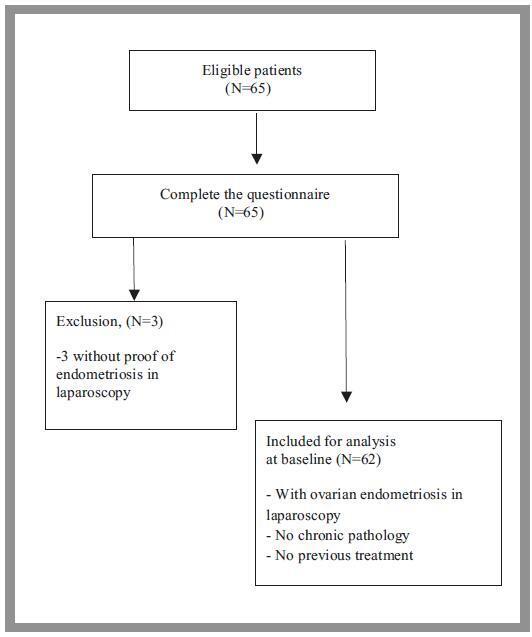Revista Brasileira de Ginecologia e Obstetrícia. 2019;41(9):548-554

To evaluate the existence of an association between ultrasound findings and epidemiological and clinical factors using results obtained from the EHP-30 questionnaire in women with ovarian endometriosis.
A cross-sectional observational study was performed between July 2012 and May 2015, in which patients with chronic pelvic pain suggestive of endometrioma, as indicated by the results from a transvaginal pelvic ultrasonography, completed the standardized Endometriosis Health Profile – 30 (EHP-30) questionnaire to access quality-of-life scores before beginning treatment for endometriosis. A total of 65 patients were included. The data was analyzed in the statistical program IBM SPSS Statistics for Windows, Version 22.0 (IBM Corp., Armonk, NY, USA) for the comparison of data through linear multiple regression.
The suitability of the linear regression model was confirmed by the histogram of the dependent variable and the residue distribution plot, confirming the trend of linearity as well as the homogeneous dispersion of the residues. The mean age of the patients was 39.7 ± 7.1 years old. Themajority was Caucasian (64.5%), had completed higher education (56.5%) and was nulligravida (40.3%). Infertility was present in 48.4% of the patients studied. Out of the total sample, 80.6% of the cases were symptomatic and complained mainly of acyclic pain, 79% of dysmenorrhea, and 61.3% of dyspareunia. This reflects the negative influence of endometriosis on the quality of life of patients with this disease.
Dyspareunia and acyclic pain were independent factors of correlation with high scores in the EHP-30 questionnaire, reflecting a worse quality of life.
Search
Search in:


Comments